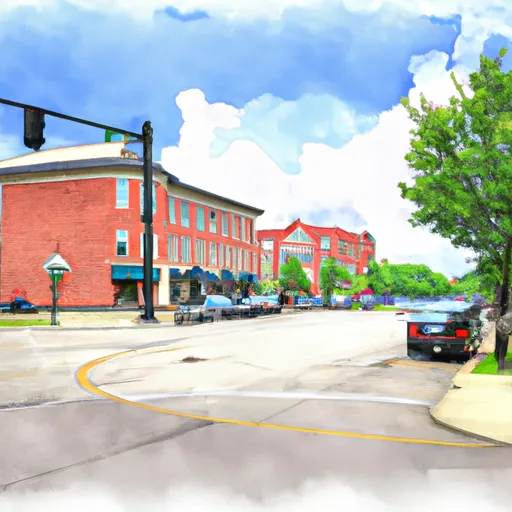°F
°F
mph
Windspeed
%
Humidity











Milton-Center, Ohio is a small village located in Wood County, in the northwestern part of the state. The village has a humid continental climate, characterized by four distinct seasons. Summers are typically warm and humid, with temperatures ranging from the mid-70s to mid-80s Fahrenheit. Winters are cold, with temperatures often dropping below freezing and occasional snowfall.
Hydrologically, Milton-Center lies in the Maumee River watershed. The village is not directly located on the river, but it is surrounded by streams and water bodies that contribute to its hydrology. These water sources provide opportunities for fishing, boating, and other water-based recreational activities.
Outdoor enthusiasts in Milton-Center can explore nearby parks and natural areas. Just a short drive away is the Maumee Bay State Park, which offers a variety of recreational opportunities, including hiking, birdwatching, and swimming. The Black Swamp Preserve, located nearby, provides hiking trails and opportunities for wildlife observation.
In summary, Milton-Center, Ohio experiences a continental climate with distinct seasons. Its hydrology is influenced by the Maumee River watershed, offering various outdoor recreational activities in nearby parks and natural areas.
Weather Forecast
Milton-Center receives approximately 895mm of rain per year, with humidity levels near 83% and air temperatures averaging around 10°C. Milton-Center has a plant hardyness factor of 6, meaning plants and agriculture in this region thrive during a short period during spring and early summer. Most plants will die off during the colder winter months.
Nearby Snowpack Depths
2
Inches
Regional Streamflow Levels
939
Cubic Feet Per Second
462
Cubic Feet Per Second
1,150
Cubic Feet Per Second
24
Cubic Feet Per Second
Nearby Camping
| Camping Area | Reservations | Toilets | Showers |
|---|---|---|---|
| Bishop Lake - Brighton Rec Area | |||
| Appleton Lake - Brighton Rec Area | |||
| Murray Lake - Brighton Rec Area | |||
| Pinckney State Rec Area | |||
| Seven Lakes State Park | |||
| Mary Jane Thurston State Park |



